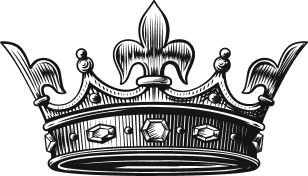We’ve been blogging for years about business-to-business (B2B) eBooks: Which format is best? How to create a great one? Yet in our recent meetings with clients, a more basic question has popped up: What IS an eBook?
Short answer: an eBook can be almost anything. Wikipedia describes an eBook as “a book-length publication in digital form, consisting of text, images, or both, readable on computers or other electronic devices.” That’s a very broad definition—one that gives B2B marketers a wide range of content and format options.
In this post, we’ll share the broadest examples we’ve seen, and our tighter definitions of the ideal B2B eBook.
Content:
- Broadly defined, B2B eBooks can cover almost any content, on any topic. The content can be old or brand new. It can be written in a “salesy” tone (like a brochure) or in a more serious and academic one (like a white paper). And it can be organized in any way: as a story to be read from beginning to end, as instructional copy written in chronological order, or grouped by topic into chapters.
- Our position: eBooks are thought leadership assets designed to share your company’s thinking on a topic of interest to your customers. Ideally, they consist of a brand new, beautifully written introduction that describes the content to follow, and why your customers will want to read it. Then, the eBook’s content—organized into chapters, like a book—shares your company’s thought leadership on that topic. Chapter content can include previously published (but still relevant and high-quality) white papers, articles, and other long-form assets, ideally peppered with useful infographics, charts, graphs, icons, photography, and other visuals that reinforce your message.
In our opinion, it’s perfectly acceptable to have no new content in your chapters; your eBook can simply package your company’s existing high-quality content on a particular topic so that it’s easy for your customers to access. Better, of course, is to include at least some new chapter content. And tone matters: In our opinion, an eBook should read like thought leadership, not like a brochure. Keep it smart and tight, written in the third person, and invite readers to jump to the content they want rather than read from beginning to end.
Format:
- Broadly defined, eBooks come in all formats. Most eBooks are published in standard PDF, iPDF, or flip-book format. We’ve even seen PowerPoint decks labeled as eBooks.
- Our position: because eBook content tends to be long, dense, and organized into meaty (and ideally stand-alone) chapters, it’s easiest for users to access it through interactive formats like iPDF and flip-book. We discuss the pros and cons of these two formats in this useful blog post; our preferred format is iPDF. In our opinion, standard PDF makes an eBook feel too much like a brochure because users have to read it in a linear fashion, from beginning to end. And an eBook in PowerPoint is just plain wrong.
B2B marketers are always looking for exciting new ways to share their company’s content with customers. Because they’re relatively new, and so broadly defined, eBooks are hot, hot, hot in B2B marketing right now. We’re encouraging our clients to stick to the narrower content and format options outlined in this post to ensure their eBooks represent something new and valuable for their customers—and aren’t just brochures dressed up in a slick new layout.


